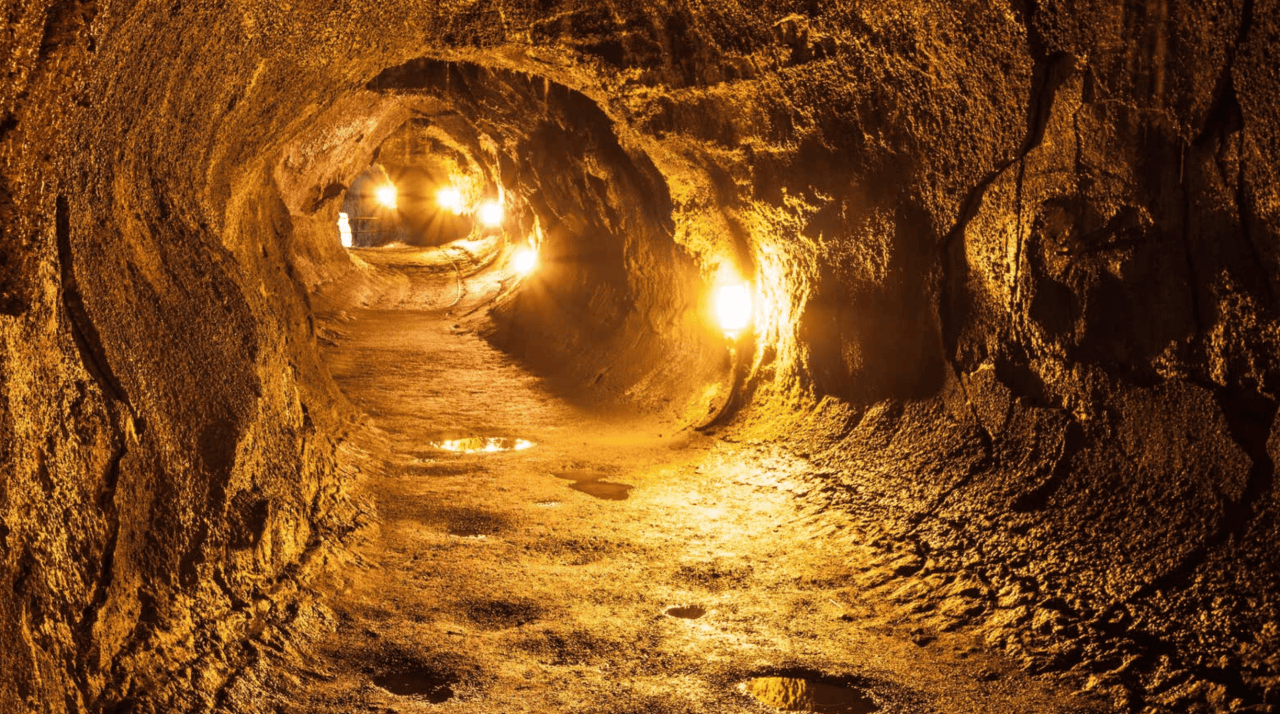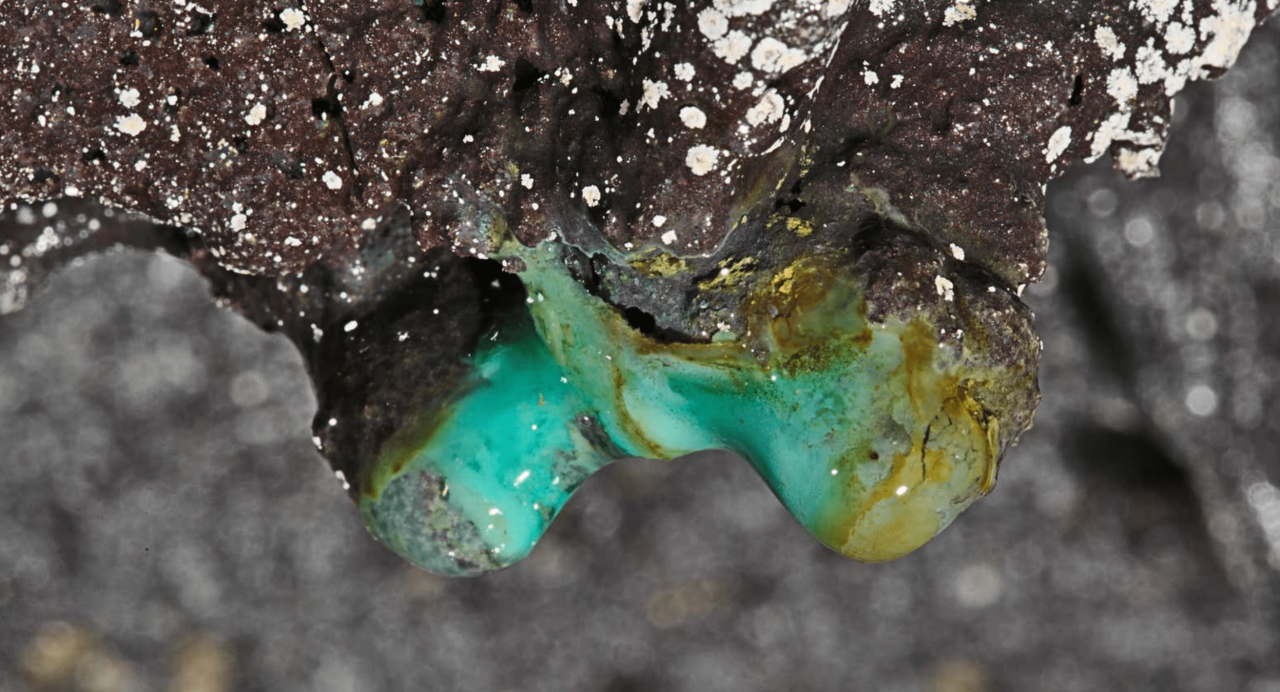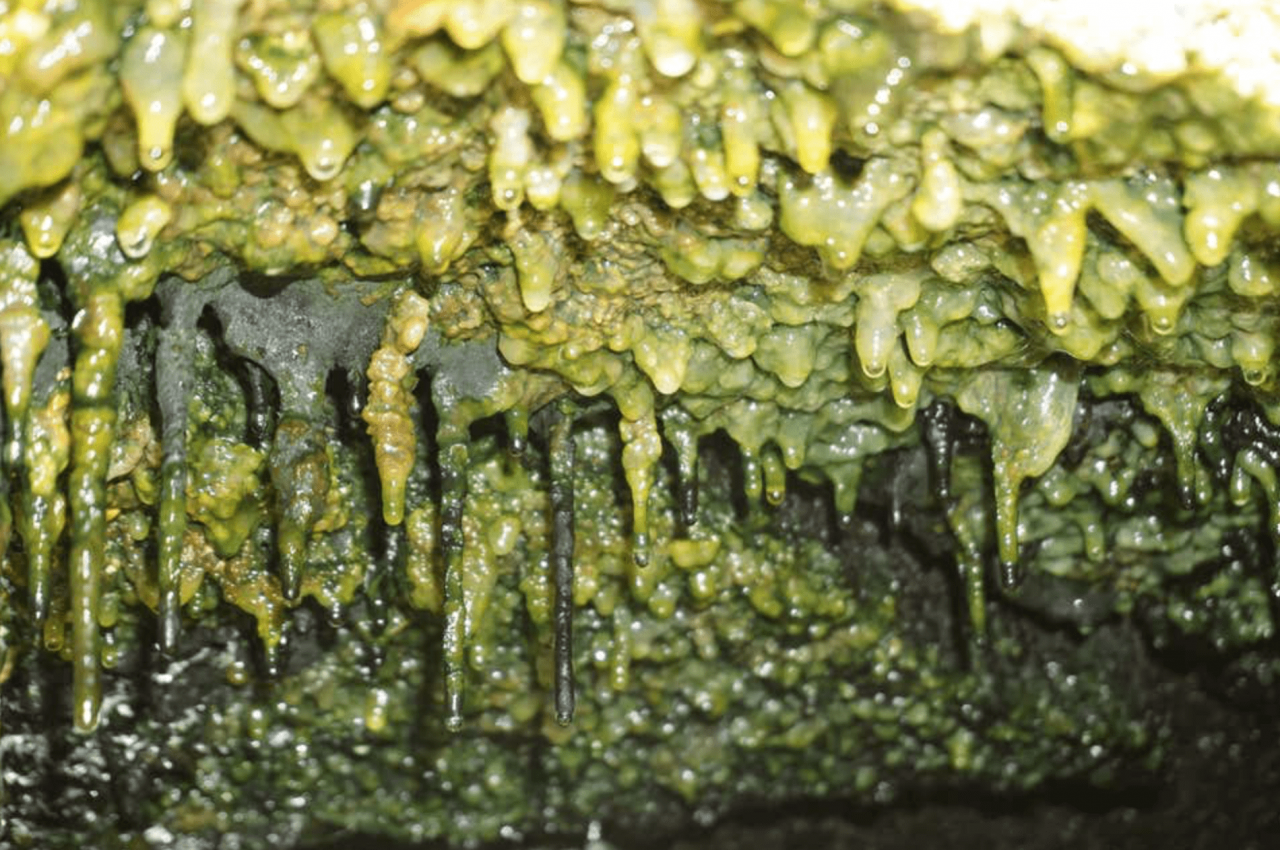A new study recently found that Hawaii’s volcanic environment is rich in mysterious microbes. Lava caves and other structures created by volcanic activity on the island are home to unique, diverse, and still featureless bacterial communities, scientists say. These findings show that there is still a lot to learn about life under some of the most extreme conditions on Earth.

Several universities and NASA researchers collaborated on the study, which has been published in the journal Frontiers in Microbiology. The scientists studied samples collected from 70 sites along the Big Island of Hawaii, the largest of the Hawaiian Islands. These sites include caves, pipes, and fumaroles, which are openings or vents through which volcanic gases and water can escape. They analyzed and sequenced the RNA found in the samples, allowing them to draw a rough map of the bacterial community that lives there.

Above: Stalactite formation with copper minerals and white microbial colonies in the Hawaiian cave system from this study.
Some of these areas, especially those undergoing geothermal activity, are some of the most inhospitable places in the world because they are so hot and full of chemicals that are toxic to most living things. So the team hopes to find relatively few species of life in sites with these extreme conditions. The researchers found that older caves and pipes formed more than 500 years ago did have greater bacterial diversity. But to their surprise, even active geothermal vents were teeming with bacteria of all kinds. Bacterial communities also appear to interact more complexly in these harsher habitats than in other locations.
“This begs the question of whether extreme environments help create more More interacting microbial communities, where microbes are also more dependent on each other? If so, how do extreme environments contribute to this?”

Above: Thick mats of microbes hang beneath rocky ledges of steam vents that run along the Eastern Rift Belt.
The bacteria found at these sites also rarely overlap, meaning these environments appear to have their own unique microbial worlds, with at least thousands of unknown species yet to be identified. One type of bacteria, called Chloroflexi, is particularly influential because they are commonly found in different volcanic regions and appear to interact with many other organisms. They may be an example of a “centre species” — microbes that are critical to the structure and function of their communities.
Prescott said: “This study points to the possibility that even older bacterial lineages, such as Chloroflexobacteria, may have important ecological ‘jobs’ or roles. Chloroflexus is an extremely diverse microbial bacteria, found in many different environments with many different roles, but they are not well studied, so we don’t know what they do in these communities. Therefore, some scientists call these groups ‘microbial dark matter’ — Microorganisms that have not been discovered or studied in nature.”




GIPHY App Key not set. Please check settings